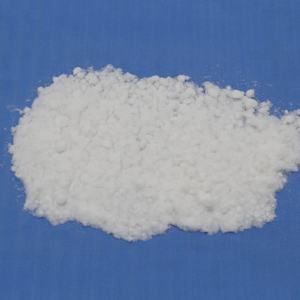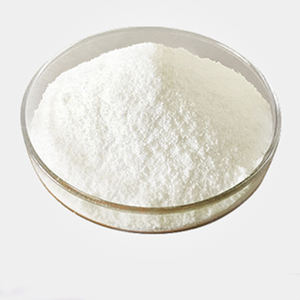1. Product Principles and Morphological Advantages
1.1 Crystal Structure and Chemical Composition
(Spherical alumina)
Spherical alumina, or spherical light weight aluminum oxide (Al ₂ O ₃), is a synthetically created ceramic material identified by a well-defined globular morphology and a crystalline structure mostly in the alpha (α) stage.
Alpha-alumina, the most thermodynamically secure polymorph, includes a hexagonal close-packed plan of oxygen ions with light weight aluminum ions inhabiting two-thirds of the octahedral interstices, resulting in high latticework power and phenomenal chemical inertness.
This stage exhibits outstanding thermal security, keeping honesty as much as 1800 ° C, and resists response with acids, alkalis, and molten steels under most industrial conditions.
Unlike uneven or angular alumina powders derived from bauxite calcination, round alumina is crafted through high-temperature processes such as plasma spheroidization or fire synthesis to accomplish uniform satiation and smooth surface area texture.
The improvement from angular forerunner fragments– often calcined bauxite or gibbsite– to thick, isotropic balls eliminates sharp sides and inner porosity, boosting packaging performance and mechanical longevity.
High-purity grades (≥ 99.5% Al Two O FOUR) are vital for digital and semiconductor applications where ionic contamination must be minimized.
1.2 Particle Geometry and Packaging Habits
The specifying feature of round alumina is its near-perfect sphericity, commonly measured by a sphericity index > 0.9, which dramatically influences its flowability and packaging thickness in composite systems.
In contrast to angular particles that interlock and produce spaces, round fragments roll previous one another with marginal rubbing, making it possible for high solids packing during formula of thermal interface products (TIMs), encapsulants, and potting substances.
This geometric harmony permits optimum theoretical packing thickness exceeding 70 vol%, far exceeding the 50– 60 vol% common of irregular fillers.
Higher filler filling directly equates to boosted thermal conductivity in polymer matrices, as the constant ceramic network offers reliable phonon transport pathways.
Additionally, the smooth surface area reduces endure processing equipment and reduces viscosity increase during mixing, boosting processability and diffusion stability.
The isotropic nature of spheres additionally avoids orientation-dependent anisotropy in thermal and mechanical homes, making sure regular performance in all instructions.
2. Synthesis Techniques and Quality Control
2.1 High-Temperature Spheroidization Techniques
The manufacturing of round alumina mainly depends on thermal approaches that melt angular alumina particles and enable surface area tension to reshape them into balls.
( Spherical alumina)
Plasma spheroidization is the most commonly made use of industrial technique, where alumina powder is infused right into a high-temperature plasma flame (up to 10,000 K), causing instantaneous melting and surface area tension-driven densification right into perfect balls.
The liquified droplets strengthen swiftly throughout flight, forming thick, non-porous particles with uniform dimension circulation when coupled with accurate classification.
Alternative approaches consist of fire spheroidization making use of oxy-fuel torches and microwave-assisted home heating, though these typically use lower throughput or much less control over bit size.
The starting material’s purity and particle size distribution are crucial; submicron or micron-scale precursors generate alike sized spheres after processing.
Post-synthesis, the item undergoes rigorous sieving, electrostatic separation, and laser diffraction analysis to guarantee tight fragment dimension distribution (PSD), typically ranging from 1 to 50 µm depending on application.
2.2 Surface Modification and Practical Customizing
To enhance compatibility with organic matrices such as silicones, epoxies, and polyurethanes, spherical alumina is frequently surface-treated with coupling representatives.
Silane combining agents– such as amino, epoxy, or vinyl useful silanes– type covalent bonds with hydroxyl teams on the alumina surface area while giving natural capability that engages with the polymer matrix.
This therapy improves interfacial adhesion, decreases filler-matrix thermal resistance, and avoids heap, bring about even more uniform compounds with remarkable mechanical and thermal performance.
Surface coverings can likewise be engineered to give hydrophobicity, enhance diffusion in nonpolar materials, or allow stimuli-responsive behavior in clever thermal products.
Quality control consists of measurements of BET surface, tap density, thermal conductivity (normally 25– 35 W/(m · K )for dense α-alumina), and pollutant profiling using ICP-MS to omit Fe, Na, and K at ppm levels.
Batch-to-batch consistency is important for high-reliability applications in electronics and aerospace.
3. Thermal and Mechanical Efficiency in Composites
3.1 Thermal Conductivity and Interface Design
Spherical alumina is largely utilized as a high-performance filler to enhance the thermal conductivity of polymer-based materials used in electronic packaging, LED lighting, and power modules.
While pure epoxy or silicone has a thermal conductivity of ~ 0.2 W/(m · K), packing with 60– 70 vol% round alumina can boost this to 2– 5 W/(m · K), enough for reliable heat dissipation in compact devices.
The high inherent thermal conductivity of α-alumina, incorporated with minimal phonon scattering at smooth particle-particle and particle-matrix interfaces, allows effective heat transfer through percolation networks.
Interfacial thermal resistance (Kapitza resistance) continues to be a limiting aspect, however surface area functionalization and optimized dispersion methods help decrease this obstacle.
In thermal user interface materials (TIMs), round alumina reduces contact resistance between heat-generating parts (e.g., CPUs, IGBTs) and warm sinks, protecting against getting too hot and expanding device lifespan.
Its electrical insulation (resistivity > 10 ¹² Ω · centimeters) makes sure safety in high-voltage applications, identifying it from conductive fillers like steel or graphite.
3.2 Mechanical Security and Integrity
Past thermal efficiency, spherical alumina enhances the mechanical toughness of compounds by raising firmness, modulus, and dimensional security.
The spherical form distributes tension consistently, decreasing crack initiation and proliferation under thermal cycling or mechanical tons.
This is especially vital in underfill materials and encapsulants for flip-chip and 3D-packaged tools, where coefficient of thermal development (CTE) inequality can induce delamination.
By adjusting filler loading and bit dimension circulation (e.g., bimodal blends), the CTE of the compound can be tuned to match that of silicon or published circuit boards, minimizing thermo-mechanical stress and anxiety.
Furthermore, the chemical inertness of alumina stops degradation in damp or corrosive environments, ensuring long-term integrity in automotive, industrial, and outside electronics.
4. Applications and Technological Evolution
4.1 Electronics and Electric Lorry Systems
Round alumina is a vital enabler in the thermal management of high-power electronics, consisting of protected gateway bipolar transistors (IGBTs), power supplies, and battery administration systems in electric cars (EVs).
In EV battery loads, it is incorporated into potting compounds and phase change materials to stop thermal runaway by uniformly distributing warmth throughout cells.
LED manufacturers use it in encapsulants and additional optics to keep lumen outcome and shade consistency by lowering junction temperature.
In 5G framework and information facilities, where heat change thickness are climbing, round alumina-filled TIMs ensure secure operation of high-frequency chips and laser diodes.
Its duty is broadening right into innovative product packaging technologies such as fan-out wafer-level product packaging (FOWLP) and ingrained die systems.
4.2 Emerging Frontiers and Sustainable Advancement
Future advancements focus on hybrid filler systems integrating spherical alumina with boron nitride, aluminum nitride, or graphene to achieve synergistic thermal performance while preserving electrical insulation.
Nano-spherical alumina (sub-100 nm) is being checked out for transparent porcelains, UV layers, and biomedical applications, though difficulties in diffusion and expense continue to be.
Additive production of thermally conductive polymer compounds utilizing round alumina enables facility, topology-optimized heat dissipation structures.
Sustainability efforts include energy-efficient spheroidization procedures, recycling of off-spec material, and life-cycle evaluation to minimize the carbon footprint of high-performance thermal materials.
In summary, round alumina stands for an essential crafted product at the crossway of porcelains, composites, and thermal science.
Its one-of-a-kind combination of morphology, pureness, and efficiency makes it indispensable in the recurring miniaturization and power concentration of modern digital and energy systems.
5. Provider
TRUNNANO is a globally recognized Spherical alumina manufacturer and supplier of compounds with more than 12 years of expertise in the highest quality nanomaterials and other chemicals. The company develops a variety of powder materials and chemicals. Provide OEM service. If you need high quality Spherical alumina, please feel free to contact us. You can click on the product to contact us.
Tags: Spherical alumina, alumina, aluminum oxide
All articles and pictures are from the Internet. If there are any copyright issues, please contact us in time to delete.
Inquiry us

